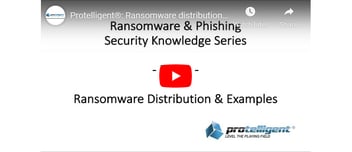End-to-End Encryption (E2EE) is a term that is coming to the forefront of security conversations. So, what’s at risk?
More than 3 billion private data records were stolen and/or exposed to the public in the first half of 2018. With increasing global anxiety about individuals’ privacy being compromised and cybercrime increasing at explosive rates, companies have to do more to protect their data and that of their customers.
We are already seeing new and major regulations rolling out with stiffer requirements. With the introduction of the General Data Protection Regulation (GDPR) last year making encryption mandatory for any system that collects data on EU citizens, it’s only a matter of time before more privacy legislation follows suit. This will force the use of E2EE as the only viable option for businesses to achieve security compliance and avoid catastrophic penalties.
In order to see the dramatic role E2EE can play in protecting data, it’s important to first understand what basic encryption is and how it works.
Whenever you send private information (plain text) over the internet to another computer or server (think email, text, voice-over-IP phone call or instant message) you have no control over who can intercept it in transit. Encryption software (encryption algorithm) along with an encryption key contained within browsers and applications automatically scrambles the data without user intervention, making it impossible for any third party other than the intended recipient to read or decipher. The same key, as well as the algorithm are required to unscramble/decrypt the data, turning it back to its original readable form. Although powerful, the challenge with basic encryption is that both sender and recipient need to have the key. This may involve sending the key from one side to the other, which exposes it to compromise.
E2EE however, as the name implies, protects the encrypted data and the key wherever they go, so no one except the sender and recipient can read the information. This includes hackers and government entities, as well as servers through which the data passes.
So the big question is does your company really need E2EE? For any organization that truly takes the privacy of their users seriously and wants to avoid potentially millions in non-compliance (GDPR) and data-breach costs, the answer is definitely. As the current cyber-threat landscape continues to trend toward healthcare, financial and ecommerce, these industries are facing an even greater risk of data theft.
While the fundamental principle behind E2EE is fairly straightforward, implementing its use poses a host of complexities that require experts with the latest knowledge and experience. Protelligent® puts E2EE, along with the most comprehensive enterprise-class security platform, within reach for small and medium-sized businesses.
Managed security partners like Protelligent not only can tackle these challenges head on, but they can also provide peace of mind that your entire environment, as well as the data you handle, is protected on all sides. Call us at (855) PRO-TELL and get the confidence you need to focus on innovation and explore new revenue opportunities with Premonition™ Security Suite.
Here’s Why Your Business Needs End-to-End Encryption

Similar Blog Post
Get the latest insights, inspiration, and resources to level the playing field for your small and medium-sized businesses.

Ransomware & Phishing Security Knowledge Series Part 2
Protelligent®: Ransomware distribution and examples The threat is real! In our second video, Fred Groehler, Protelligent...
3 Ways to Align C-level Executives and IT Decision Makers
$7.35 million is the average total cost of a cyber attack in the United States. Is your business effectively mitigating its risk?...
Top 8 Data Breaches Happening Now
Protelligent® is on top of data breaches happening around us every day. Equifax announced last week that an estimated 143 million...